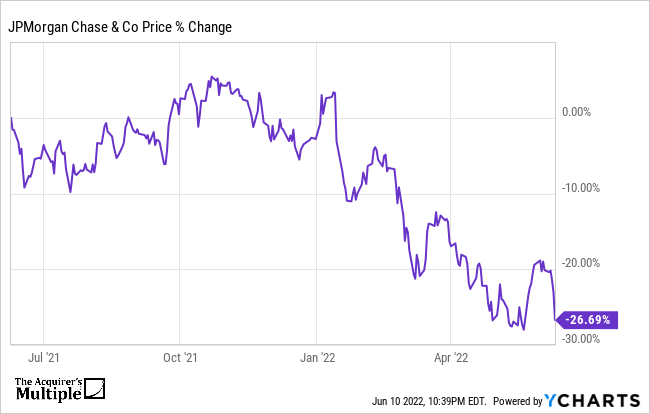
Forex margin and leverage are key details to learn if you want to trade. If you want to trade in Forex, you can use a leverage of 100:1. You can trade in $10,000 with a $100 margin account. You will have $2,000 control over a currency pair if you take a $20 position with 100:1 leverage. In this scenario, the broker locks the position for you, and you will have a free margin of $2,000 that you can use to trade in more currency pairs. If the market moves against your position, however, this margin will decrease.
Leverage
Leverage in Forex trading allows traders to increase their exposure in the market. Forex leverage of 200:1 means that a trader needs only $50 to open a position for $10,000. This allows traders to maximize their profit. However, the downside of leverage is the possibility of losing all of one's capital. Trader should learn how it works before using it. Let's take a look at the basics of this type trade and explain what it all means.

Margin
Forex margin is an area of your account set aside for you. This ensures you do not lose more money than you put in. For example, if you were to invest $100 000 in the USD/JPY currency pair, you do not need to invest the full amount. You only need to invest a small portion of your margin. This varies depending on the forex broker you use and the leverage you use. The margin you use will determine the amount of trades you can make.
Margin trades
A margin forex trade is a way for large investors to make large capital in the foreign exchange market. In order to open a new position, traders deposit money into an account. This is called the initial margin. However, if the trade goes against them, they may need to add more funds into their account. Margin calls are when the trader must add more money to his account in order to keep his position.
Calculating margin required
Use a forex margin calculator to determine the amount of margin required for forex trading. If you open a trade with too little margin, you may face a margin call, while an account with too much margin could result in a profitable trade. The amount of margin you need to open a trade depends on your risk appetite and the amount of leverage you use. A 1:100 leverage would mean that your total trading margin is $10,000. This would allow for you to open trades with smaller amounts of money, such as five hundred dollar each. Obviously, you cannot exceed $10,000 of total margin, so you must be careful and follow all trading rules and regulations.
Signs of a margin call
Forex margin calls often have the same symptoms as cash-outs. A margin call simply means that the broker is asking you to replenish your margin deposit. The call happens when your account balance is lower than the required amount of margin to keep your position open. This usually occurs when you are trying to close a leveraged position. In these situations, you will get notified that your account balance needs to be replenished. If you don't, your entire investment could be lost.

Monitoring Margin
Investors must monitor their forex margin level in order to make a profit in the foreign exchange market. It shows how much money you have to open new positions. Margin calls are dangerous when the level falls below a certain threshold. This is known as a "margin call". Many forex brokers set their margin call thresholds at 100%. Before you open a live Forex account, it's important to be able to monitor your forex margin level. Refer to your margin agreement to learn how you can monitor your forex margin level.
FAQ
How Do People Lose Money in the Stock Market?
The stock market isn't a place where you can make money by selling high and buying low. It is a place where you can make money by selling high and buying low.
The stock market is for those who are willing to take chances. They would like to purchase stocks at low prices, and then sell them at higher prices.
They believe they will gain from the market's volatility. They could lose their entire investment if they fail to be vigilant.
How does Inflation affect the Stock Market?
Inflation is a factor that affects the stock market. Investors need to pay less annually for goods and services. As prices rise, stocks fall. That's why you should always buy shares when they're cheap.
What are the advantages of investing through a mutual fund?
-
Low cost – buying shares directly from companies is costly. It's cheaper to purchase shares through a mutual trust.
-
Diversification - most mutual funds contain a variety of different securities. If one type of security drops in value, others will rise.
-
Management by professionals - professional managers ensure that the fund is only investing in securities that meet its objectives.
-
Liquidity - mutual funds offer ready access to cash. You can withdraw your money whenever you want.
-
Tax efficiency - Mutual funds are tax efficient. So, your capital gains and losses are not a concern until you sell the shares.
-
Buy and sell of shares are free from transaction costs.
-
Mutual funds are simple to use. All you need to start a mutual fund is a bank account.
-
Flexibility: You can easily change your holdings without incurring additional charges.
-
Access to information - You can view the fund's performance and see its current status.
-
Investment advice – you can ask questions to the fund manager and get their answers.
-
Security - you know exactly what kind of security you are holding.
-
Control - you can control the way the fund makes its investment decisions.
-
Portfolio tracking - You can track the performance over time of your portfolio.
-
Easy withdrawal - You can withdraw money from the fund quickly.
Disadvantages of investing through mutual funds:
-
Limited choice - not every possible investment opportunity is available in a mutual fund.
-
High expense ratio - Brokerage charges, administrative fees and operating expenses are some of the costs associated with owning shares in a mutual fund. These expenses will reduce your returns.
-
Lack of liquidity-Many mutual funds refuse to accept deposits. These mutual funds must be purchased using cash. This limits the amount of money you can invest.
-
Poor customer support - customers cannot complain to a single person about issues with mutual funds. Instead, you need to contact the fund's brokers, salespeople, and administrators.
-
High risk - You could lose everything if the fund fails.
What is a Stock Exchange?
Stock exchanges are where companies can sell shares of their company. This allows investors and others to buy shares in the company. The price of the share is set by the market. It is usually based on how much people are willing to pay for the company.
Companies can also get money from investors via the stock exchange. Companies can get money from investors to grow. They do this by buying shares in the company. Companies use their money to fund their projects and expand their business.
A stock exchange can have many different types of shares. Some are called ordinary shares. These are the most common type of shares. Ordinary shares are bought and sold in the open market. Stocks can be traded at prices that are determined according to supply and demand.
Preferred shares and debt securities are other types of shares. When dividends become due, preferred shares will be given preference over other shares. A company issue bonds called debt securities, which must be repaid.
How are securities traded?
The stock market lets investors purchase shares of companies for cash. Shares are issued by companies to raise capital and sold to investors. When investors decide to reap the benefits of owning company assets, they sell the shares back to them.
Supply and demand determine the price stocks trade on open markets. When there are fewer buyers than sellers, the price goes up; when there are more buyers than sellers, the prices go down.
There are two methods to trade stocks.
-
Directly from the company
-
Through a broker
What is a REIT and what are its benefits?
An entity called a real estate investment trust (REIT), is one that holds income-producing properties like apartment buildings, shopping centers and office buildings. These are publicly traded companies that pay dividends instead of corporate taxes to shareholders.
They are similar to corporations, except that they don't own goods or property.
Statistics
- For instance, an individual or entity that owns 100,000 shares of a company with one million outstanding shares would have a 10% ownership stake. (investopedia.com)
- "If all of your money's in one stock, you could potentially lose 50% of it overnight," Moore says. (nerdwallet.com)
- The S&P 500 has grown about 10.5% per year since its establishment in the 1920s. (investopedia.com)
- Individuals with very limited financial experience are either terrified by horror stories of average investors losing 50% of their portfolio value or are beguiled by "hot tips" that bear the promise of huge rewards but seldom pay off. (investopedia.com)
External Links
How To
How to trade in the Stock Market
Stock trading involves the purchase and sale of stocks, bonds, commodities or currencies as well as derivatives. Trading is a French word that means "buys and sells". Traders sell and buy securities to make profit. It is one of oldest forms of financial investing.
There are many methods to invest in stock markets. There are three types of investing: active (passive), and hybrid (active). Passive investors do nothing except watch their investments grow while actively traded investors try to pick winning companies and profit from them. Hybrids combine the best of both approaches.
Index funds that track broad indexes such as the Dow Jones Industrial Average or S&P 500 are passive investments. This approach is very popular because it allows you to reap the benefits of diversification without having to deal directly with the risk involved. You can simply relax and let the investments work for yourself.
Active investing involves selecting companies and studying their performance. Active investors look at earnings growth, return-on-equity, debt ratios P/E ratios cash flow, book price, dividend payout, management team, history of share prices, etc. They then decide whether they will buy shares or not. If they feel that the company is undervalued, they will buy shares and hope that the price goes up. If they feel the company is undervalued, they'll wait for the price to drop before buying stock.
Hybrid investing combines some aspects of both passive and active investing. Hybrid investing is a combination of active and passive investing. You may choose to track multiple stocks in a fund, but you want to also select several companies. In this instance, you might put part of your portfolio in passively managed funds and part in active managed funds.